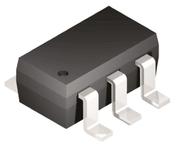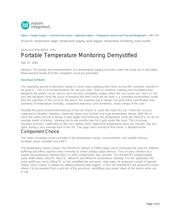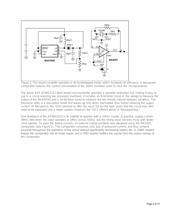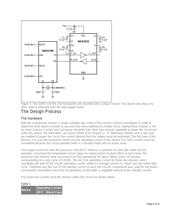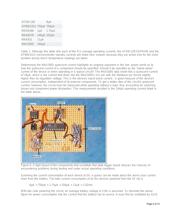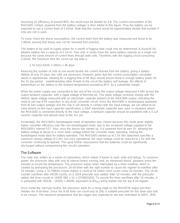下载

Maxim > Design Support > Technical Documents > Application Notes > Temperature Sensors and Thermal Management > APP 1754
Keywords: temperature logger, temperature logging, temp loggers, temperature monitoring, temp monitor
APPLICATION NOTE 1754
Portable Temperature Monitoring Demystified
Mar 27, 2003
Abstract: The design and implementation of a temperature logging circuit for under-the-hood use is described.
Measurement results from the completed circuit are presented.
Download Software
The rewarding pursuit of electronic design is never more satisfying than when turning the comment "wouldn't it
be good if..." into a circuit that breathes life into your idea. There is, however, nothing more frustrating than
designing the perfect circuit, only to see it become completely useless when the sun comes out. Like it or not,
very few designers have the luxury of knowing that their circuit will be used in a controlled environment. Aside
from the operation of the circuit on the bench, the engineer has to design it to work within specification over
variations of temperature, humidity, component tolerance, and sometimes, mood swings of the user.
Possibly the worst environment that any circuit can endure is under the hood of a car. There the circuit is
subjected to vibration, moisture, chemicals (nasty ones at that) and huge temperature swings. With this in
mind, the author set out to design a data logger that measures the temperature under the hood of a car for an
average month of driving - allowing him to see exactly how hot it gets under the hood. The circuit was
mounted securely, unattended on the car's battery shelf, logging the temperature every ten minutes, day and
night, during a very average April in the UK. The saga, from concept to final result, is detailed below.
Component Choice
The initial conceptual circuit consisted of the temperature sensor, microcontroller, non-volatile memory,
oscillator, boost controller and UART.
The temperature sensor chosen, the MAX6576, delivers a PWM output, which eliminates the need for external
buffering and offers superior noise immunity to similar analog-output devices. Thus an easy interface to a
simple microprocessor (without ADCs or other components) was possible. The MAX6576's programmable
pulse width allows 10us/°K, 40us/°K, 160us/°K and 640us/°K temperature readings. For this application the
pulse width was set to 160us/°K, as this simplified the processor code loops. Its quiescent current is typically
140µA, which makes it suitable for battery-powered data loggers. In fact, the MAX6576's low quiescent current
allows it to be powered from a port pin of the processor, permitting easy power down of the device when not
in use.
Page 1 of 10

